- News
- Reviews
- Bikes
- Components
- Bar tape & grips
- Bottom brackets
- Brake & gear cables
- Brake & STI levers
- Brake pads & spares
- Brakes
- Cassettes & freewheels
- Chains
- Chainsets & chainrings
- Derailleurs - front
- Derailleurs - rear
- Forks
- Gear levers & shifters
- Groupsets
- Handlebars & extensions
- Headsets
- Hubs
- Inner tubes
- Pedals
- Quick releases & skewers
- Saddles
- Seatposts
- Stems
- Wheels
- Tyres
- Tubeless valves
- Accessories
- Accessories - misc
- Computer mounts
- Bags
- Bar ends
- Bike bags & cases
- Bottle cages
- Bottles
- Cameras
- Car racks
- Child seats
- Computers
- Glasses
- GPS units
- Helmets
- Lights - front
- Lights - rear
- Lights - sets
- Locks
- Mirrors
- Mudguards
- Racks
- Pumps & CO2 inflators
- Puncture kits
- Reflectives
- Smart watches
- Stands and racks
- Trailers
- Clothing
- Health, fitness and nutrition
- Tools and workshop
- Miscellaneous
- Buyers Guides
- Features
- Forum
- Recommends
- Podcast
review
£1,250.00
VERDICT:
An interesting entry into the smart bike market from Bkool, but not without its issues
Weight:
45,000g
Contact:
At road.cc every product is thoroughly tested for as long as it takes to get a proper insight into how well it works. Our reviewers are experienced cyclists that we trust to be objective. While we strive to ensure that opinions expressed are backed up by facts, reviews are by their nature an informed opinion, not a definitive verdict. We don't intentionally try to break anything (except locks) but we do try to look for weak points in any design. The overall score is not just an average of the other scores: it reflects both a product's function and value – with value determined by how a product compares with items of similar spec, quality, and price.
What the road.cc scores meanGood scores are more common than bad, because fortunately good products are more common than bad.
- Exceptional
- Excellent
- Very Good
- Good
- Quite good
- Average
- Not so good
- Poor
- Bad
- Appalling
For £1,250 the Bkool Smart Bike is undercutting its only other current direct rival, the Wattbike Atom, by quite a margin. It has certain advantages over the Wattbike – it's completely silent in operation, and is quicker to adjust resistance – but there are quite a few foibles too. Some things – Zwift support, for example – will no doubt be available down the line; others – most especially the wide Q Factor – can't really be ironed out. As such it's a decent buy if you're looking for something easy to use for indoor workouts, but it doesn't feel like the complete road cyclist's training tool it wants to be.
- Pros: Silent, good range of resistance
- Cons: Wide Q factor, mobile control of gearing is a bit clunky, not widely supported
The 45kg Smart Bike isn't something you're going to relish lifting into the back of your car, so helpfully Bkool includes a delivery service that not only brings the bike to your door but includes a setup to get the bike assembled and working. So all you have to do is get on and ride.
> Find your nearest dealer here
It's Bluetooth and ANT+ enabled, and can communicate with Bkool's training app on desktop machines and smart devices. I used a desktop PC and connected via ANT+ using the supplied dongle with no issues.
The Smart Bike is mostly a spin bike. It has a fixed wheel – there's no freewheel, so you have to keep your legs moving all the time – and the flywheel is the wheel itself, a thin metal disc that has plenty of weight in it. Once you get used to that, the feel of the bike is quite natural in terms of pushing against the pedals. And it's also completely silent: no noise from the drivetrain or wheel at all, save for the occasional ping from the back which sounds like maybe the magnet resistance system brushing the flywheel.
I've been on quiet trainers before but this one's weird, it's so noise-free. If you live in a place where the noise of a turbo has always put you off, that might be a major selling point.
Setup
The position is very configurable. You get a reasonable saddle that's height adjustable via a knob at the back of the seat tube. It's a pin system and the holes are about 12mm apart, so it's not the finest tuning available but it works well.
The seat clamp itself is a cheap pressed steel affair that was fine in testing but isn't one of the bike's strong points. It's easy enough to swap the saddle.
At the front you get a spin-bike-style handlebar with bullhorns and extensions, though there are no elbow pads so the TT position isn't that comfy.
The bars are adjustable for height and reach; given the range, the bike should be able to accommodate most people easily enough. You can't (easily) swap out the supplied bars for drops if you're looking for a more road-orientated experience.
The bike comes with flat pedals, but you'll probably want to swap your own pedals in. When doing so, you might be drawn to thinking, 'these pedals look a bit far apart'. And you'd be right.
The Smart Bike has a huge Q factor; that's the distance between the faces of the cranks where you fit the pedals. There's always lot of chat about Q factor and efficiency; your perfect Q factor for pedalling will depend on your physiology, but if you're riding a standard road bike then the chances are that the Q factor of the cranks will be somewhere between 145mm and 150mm, and that will feel 'normal' to you. I measured the body of the Bkool Smart bike at 120mm, with a 47mm gap each side to the crank face. That's 214mm.
Now, I'm not a person that obsesses over Q factor, and the Wattbike, which I measured at 156mm, feels normal to me even though it's a bit wide. The Bkool, on the other hand, does not feel normal at all. It feels like riding a fat bike, which is unsurprising as that's the sort of Q-factor you need on a fat bike in order to make the pedals miss the huge tyres.
It's a bit of a deal breaker for me, to be honest. If I was going to spend well over a grand of my own money on something to replicate my road riding indoors, I just don't think I'd be able to put up with it. You might not mind so much, and it could be mitigated up to a point: the Bkool uses cheap standard cranks that are curved, and swapping them for straight profile ones (that's what Wattbike does; the shell of that bike is only 10mm narrower than the Bkool) would certainly move the pedals inwards a bit. Even then, though, you're probably looking at a minimum of 170-180mm, as the bottom bracket extends further than the Wattbike. Which I reckon would still feel a bit bandy-legged for me.
Resistance
Anyway, moving on. A bit like the Wattbike Atom, the Bkool Smart bike has a range of 'gears' that adjust the resistance of the bike. Bkool says that the Smart Bike is 'the only indoor bike with automatic resistance control', but I'm struggling to think of a thing it does that the Wattbike doesn't do, that could justify such a claim.
Unlike the Wattbike – with its shifter hoods – there's no hardware for accessing the gears: you can change gear on your phone using the mobile app if you're using a desktop PC, and Bkool includes a clip for your phone that works okay, although it tends to press the volume buttons on the side of my phone which is a bit annoying.
Getting the app set up was fiddly – I had to find my computer's IP and enter that manually, as it couldn't find the simulator on the network – but once it's running it's solid, if a bit basic. Given that the gearing screen is used only for moving the resistance up and down, the buttons could have been made bigger, like maybe a third of the screen for each. As they are they're a bit small, especially when you're working hard.
The responsiveness of the Bkool virtual gearing is better than it was on the Wattbike when we originally tested it, although we've got the updated Wattbike back at the moment and they claim it's been improved. Anyway, when riding a virtual course on the Bkool simulator the resistance changes are decently quick. You'll need the full range of gears, too: cruising along on the flat I was generally in the 13-15 range with 15 being the hardest gear.
Once the gradient starts to creep up you'll quickly work your way down the gears. There's still a bit of lag, so if things get too hard and you ease off a couple of gears there's a bit of a delay while the bike catches up. That's mitigated by the fact that the Bkool simulator shows you what's coming up in terms of gradient, so you can do your shifting a bit in advance.
Once you're past about 8% you'll be down at the low gears. It's a well-considered range and it works pretty well, most of the time. Sometimes the gearing doesn't seem ideal: on the Alpe d'Huez climb in the Bkool Simulator (more on that below), for example, I was pushing 250W in first gear at about 60rpm about five minutes in, making it feel like doing it on a bike that was a bit overgeared for the climb.
In terms of power accuracy, the Bkool bike was more or less on the money. Benchmarked against my trusty Garmin Vector power pedals it tracked very well, and delivered sensible numbers. Most of the time it was within 2-3% of the pedals, and there didn't seem to be any drifting of power up or down as the bike warmed up. The bottom line is that it's repeatable data, with 300W on one day feeling like 300W on another day. There are no mechanical interfaces – bike to tyre, chain to cassette – that can be set up differently, you just hop on and ride. If you're using the Bkool as your indoor training benchmark, you'll easily be able to discern trends.
App
The Smart Bike comes with a three-month subscription to Bkool's indoor training app. That's a good thing because at time of writing it's not really widely supported elsewhere, though I'd expect that to change. It's a bad thing in that it feels a little bit stingy considering this is a £1,250 unit and you get the same free trial with the £349 Smart Go trainer.
There are significant issues with the rollout across other apps: because there's no physical gear changing mechanism Bkool would need other providers to include some kind of gear-changing functionality, which they may well be reluctant to spend a huge amount of development time on. I'm mostly thinking of Zwift here, as that's the environment where the gear changing would be a prerequisite; presumably it would need to be added to the Companion app, which is not likely to be trivial. In more structured environments like TrainerRoad the app could be made to control the resistance directly in ERG mode, so it's less of an issue.
Bkool's online environment has come a long way in the past few years. There's more on it, and it's a bit easier to use than it used to be. You can ride virtual courses including classics like the Alpe d'Huez and the Stelvio, as well as a host of others. One of the good things about the selection of routes is that they're not all big climbs, there are flat routes and lumpy ones – even some that are just descents.
Bkool is in the process of moving the routes over to a rendered virtual display; before, they were either video, or just a map view. Alpe d'Huez, for example, you can have as a virtual climb, or a video, or a map. The Simulator defaults to the rendered view, and most of the time I find that's the best one: it's nicer to look at, and higher quality than the video which is often fairly low resolution and obviously taken from a motorbike that leans into the corners, which feels a bit weird when you're crawling round a hairpin.
The virtual display doesn't feel quite as slick as Zwift but it's come a long way in quite a short time, and now there's lots of detail, especially on the more popular climbs.
The virtual display also means that you can see (and race) other riders in a session. You can join someone else's session or schedule one with your friends if you're all on Bkool. Then you can race it. As well as outdoor rides there are velodromes, and you can hop in and blast a few laps with other riders.
To be honest, that whole 'riding with others' functionality feels like a work in progress in the Bkool Simulator, not least because generally there aren't enough people on the platform to really make it work. It's the middle of summer in the western hemisphere now so numbers are low anyway, but there are at least ten times as many people on Zwift at any one time as there are on Bkool. Remember when Zwift was full of blue ghost riders to make up the numbers? Maybe not, but anyway, it feels a bit like that at the moment. Also, the app needs a proper calendar that people can sign up to and ride together; it feels odd just jumping on someone else's ride.
Structured sessions
As well as routes there's structured training. You can do an FTP test (5-minute and 20-minute versions are available) and there's a broad range of workout sessions which are tailored to your FTP. The Smart Bike uses ERG mode to match your power to the session, and it works very well.
In terms of the app and the bike together, these sessions are the best thing about it for me. There are video instructor-led sessions which are like a cross between a spin class and a TrainerRoad session, and those work really well, keeping you motivated and engaged without having to worry about fiddling with a resistance wheel. The silent running of the bike makes high-intensity intervals a bit odd as you're suffering in silence, but overall the fitness sessions work really well.
Conclusion
Overall, the Bkool Smart Bike is a bit of a mixed bag, really. It does deliver a genuine smart-controlled virtual riding experience, power numbers are repeatable, and it's completely silent in operation. It's cheaper than the only current direct competitor – the Wattbike Atom – too.
On the other hand, the wide bottom bracket makes it feel ungainly, with the huge Q factor a deal breaker for me because it'll never feel like riding a road bike indoors. The current lack of support for platforms other than Bkool's own also marks it down; that will change, but the fact that the virtual gearing doesn't have any hardware on the bike means that the integration won't be simple. The Bkool Simulator has come a long way and it's miles better than it used to be, but it still needs development, especially for the group riding functions.
> Buyer's Guide: 17 of the best turbo trainers and rollers
A price tag of £1,250 isn't expensive for a smart bike: it's the cheapest one you can buy right now, and Bkool has been discounting it to £999 too. For a genuine road riding experience indoors it's quite a long way off the benchmark, though, and £1,250 would buy you one of the best smart trainers and still leave enough money for a secondhand bike to dedicate to it. That would still be my preference, but the small footprint and silent operation of the Bkool might appeal to you, especially if more than one rider wants to train.
Verdict
An interesting entry into the smart bike market from Bkool, but not without its issues
road.cc test report
Make and model: Bkool Smart Bike
Size tested: n/a
Tell us what the product is for
Bkool says: "The only indoor bike with automatic resistance control.
The heart of Bkool Smart Bike is connected to the internet. Although you can disconnect it and connect it whenever you want. That's why you do not need controls or screens: you control your bike with your smartphone, tablet or PC and see the image on your screens (or on your TV).
Automatic resistance
Can reach up to 1,500 W.
The pedaling resistance adjusts automatically to the power level of your indoor cycling session.
It adapts to you
A quick fitness test (FTP) will create personalized resistance settings to help you reach your goals. As your fitness level improves, the bike will adapt to continue delivering the perfect fitness/cycling experience.
Maximum precision
Its electronic system allows for maximum precision, with up to 1500 different resistance levels.
Take control with your phone
With the Bkool Remote app, you can manually control the pedalling resistance of the Bike. Smartphone handlebar mount included.
Virtual shifting
We've designed the ability to "virtually" shift gears so you can ride routes on the Bkool Simulator as if you were riding a traditional bike. Think of it as electronic shifting, without derailleurs!
Tell us some more about the technical aspects of the product?
From Bkool:
Resistance System of permanent magnets. No friction. 1500 different positions.
Power 850W at 90 rpm / 1500W at 120rpm
Connections Wireless ANT+, Bluetooth Smart © ©
Transmission Poly-V belt. Completely silent
Weight 45 kg. Super stable
Firmeware Updatable online. No cable needed to update.
Rate the product for quality of construction:
7/10
Generally good, some cheap components.
Rate the product for performance:
7/10
Silent, power measurement is good, position is configurable.
Rate the product for durability:
8/10
No reason why it shouldn't last.
Rate the product for weight (if applicable)
7/10
More is good here.
Rate the product for comfort (if applicable)
5/10
Q factor is too wide, bars aren't the best.
Rate the product for value:
6/10
Not expensive for a smart bike, but not cheap for an indoor trainer.
Tell us how the product performed overall when used for its designed purpose
It's a mixed bag – some good stuff, some bad.
Tell us what you particularly liked about the product
Silent operation, good power mesaurement.
Tell us what you particularly disliked about the product
Q factor too wide, no hardware shifting, limited support out of Bkool's environment.
Did you enjoy using the product? For some sessions, yes.
Would you consider buying the product? No, the Q factor would be a deal breaker for me.
Would you recommend the product to a friend? Maybe...
Use this box to explain your overall score
An interesting entry into the smart bike market from Bkool, but not without its issues. Good value if you can look past its foibles; if you can't then your money is better spent elsewhere.
About the tester
Age: 45
I usually ride: whatever I'm testing... My best bike is: Kinesis Tripster ATR, Merida Scultura
I've been riding for: Over 20 years I ride: Every day I would class myself as: Experienced
I regularly do the following types of riding: road racing, time trialling, cyclo-cross, commuting, touring, club rides, sportives, general fitness riding, fixed/singlespeed, mountain biking, Mountain Bike Bog Snorkelling, track
Dave is a founding father of road.cc, having previously worked on Cycling Plus and What Mountain Bike magazines back in the day. He also writes about e-bikes for our sister publication ebiketips. He's won three mountain bike bog snorkelling World Championships, and races at the back of the third cats.
Latest Comments
- quiff 1 sec ago
I was intrigued as to what, if any, connection the term has to Mongolia. According to, ahem, Wikipedia, Down himself (namesake of the syndrome)...
- Davisian 38 min 44 sec ago
I don't know why this is in the news, the Merseyside area is peppered with crossings that work like this and have done for decades. Maybe we don't...
- stonojnr 49 min 5 sec ago
at Man Utd its more about managing the bags of wind who used to play the game but now endlessly criticise from the comfy pundit sofa, than anyone...
- bikes 59 min 28 sec ago
I wonder if it will eventually get modified into the original plan, but in a few decades down the line.
- wtjs 1 hour 53 min ago
The cyclist told road.cc that he has not reported the near miss to the City of London Police because “what’s the point? They’re not interested...
- chrisonabike 2 hours 10 min ago
Never mind all that now - do people have any opinion on pet-cycling-safety?...
- bobbinogs 2 hours 40 min ago
Just to close this one off, I ended up having to return the unit, at my expense I should add. The customer service team quickly agreed that it was...
- chrisonabike 3 hours 10 min ago
That's clearly far too large a vehicle to transport pets in urban areas. What about a Ram (perhaps more suited to country types though)?
- Tom_r_k 3 hours 17 min ago
Brilliant to see a company showing some love to rim brakes. I have been tempted to get some soon so may support a company offering fresh updates...
- Jerm14 4 hours 1 min ago
Thanks for the Merida recommendation. Ordered it from Certini and it arrived the following day. As you say, it is a little odd that you need to use...




















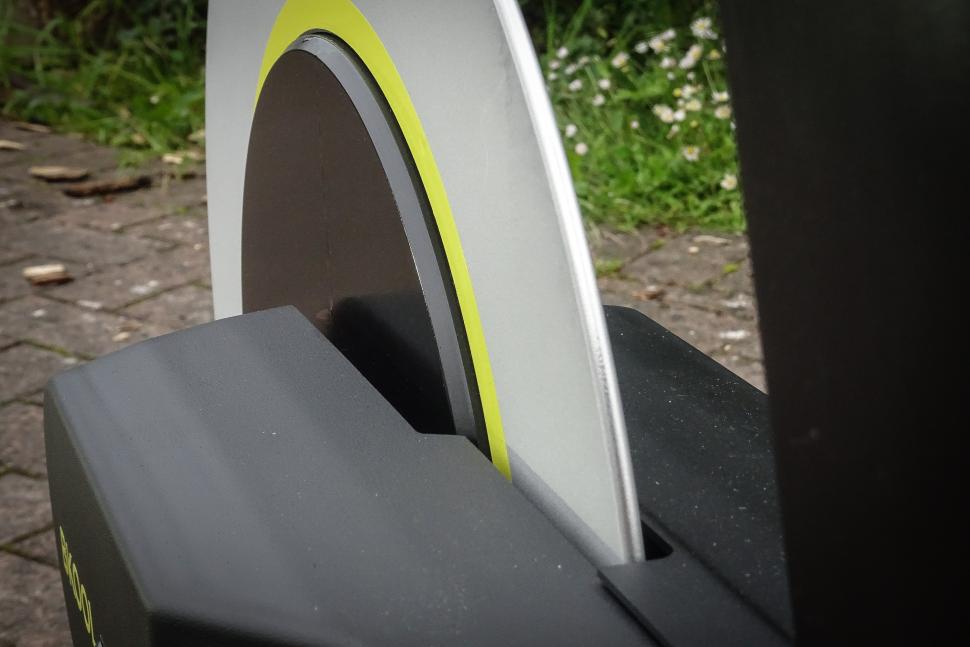

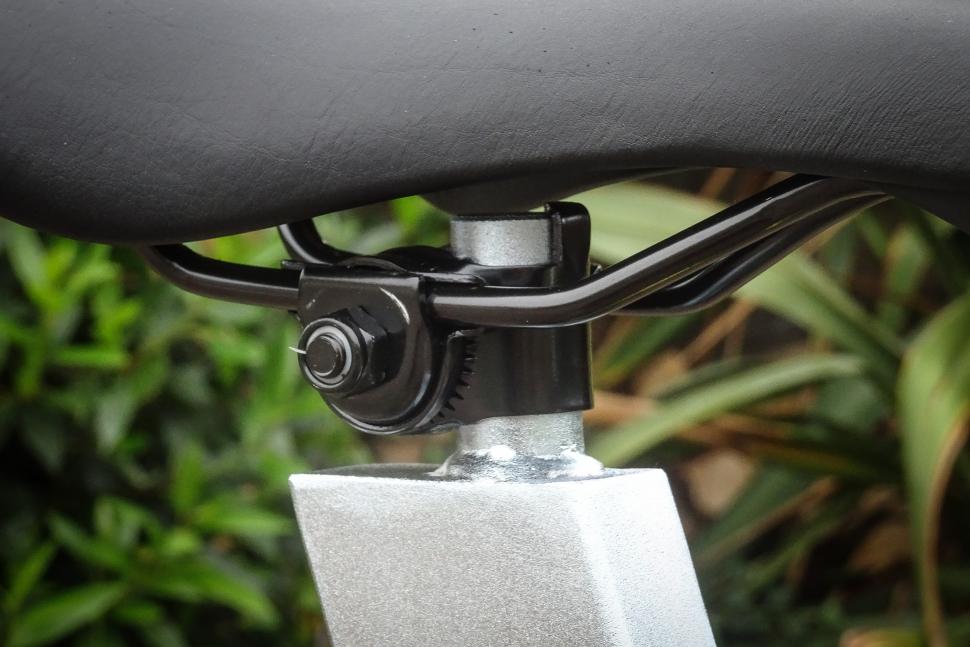
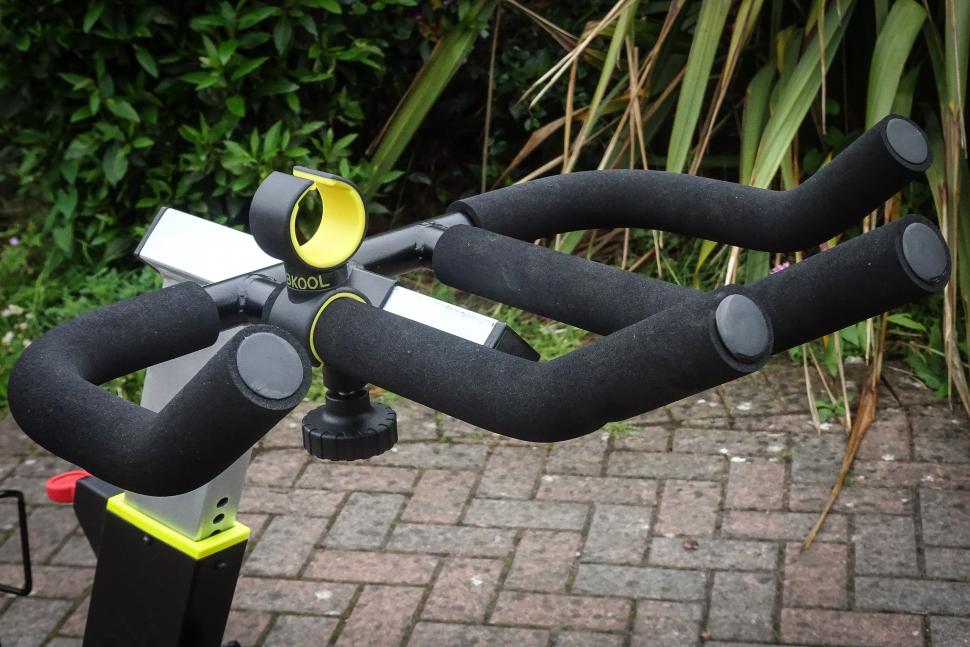
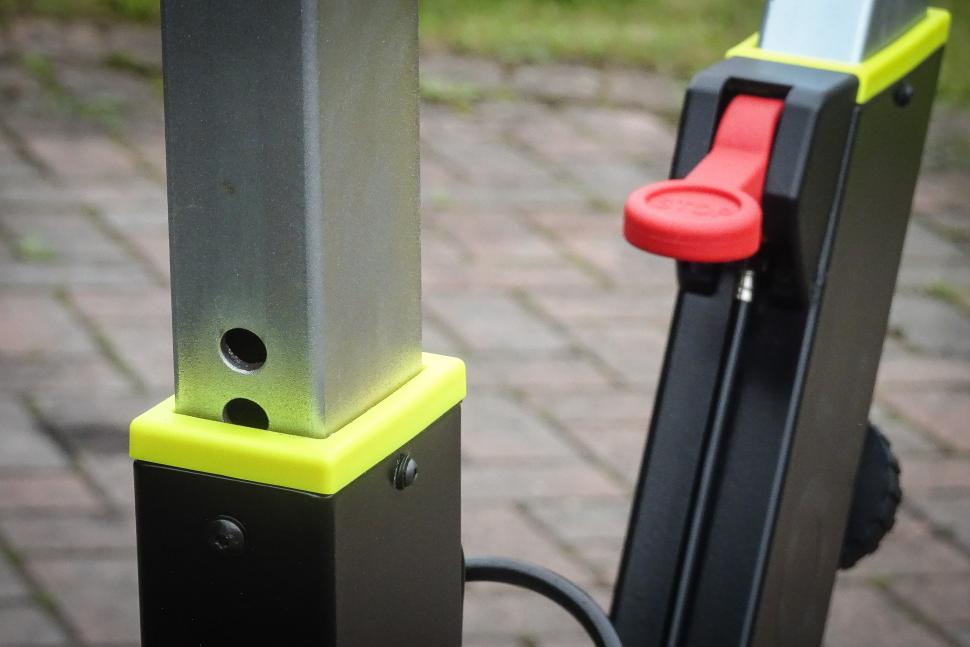

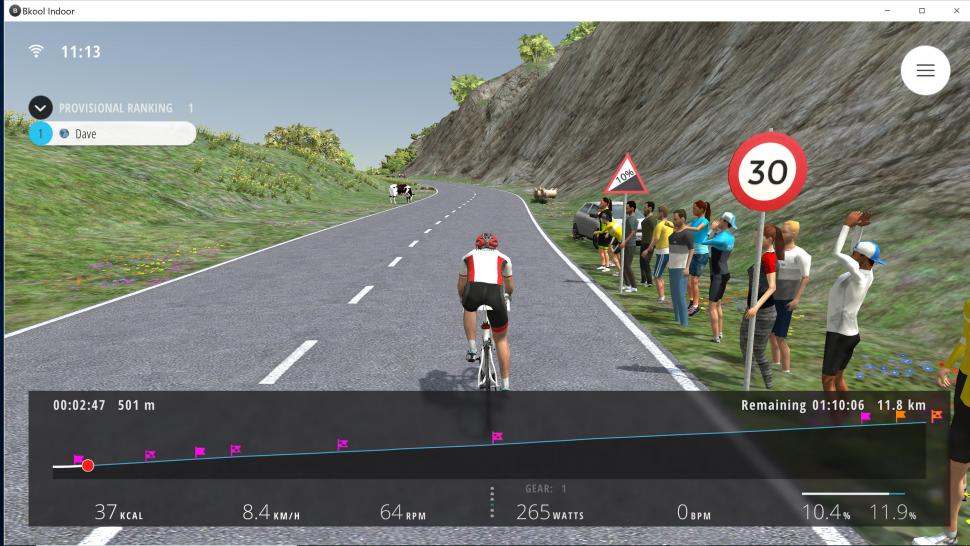


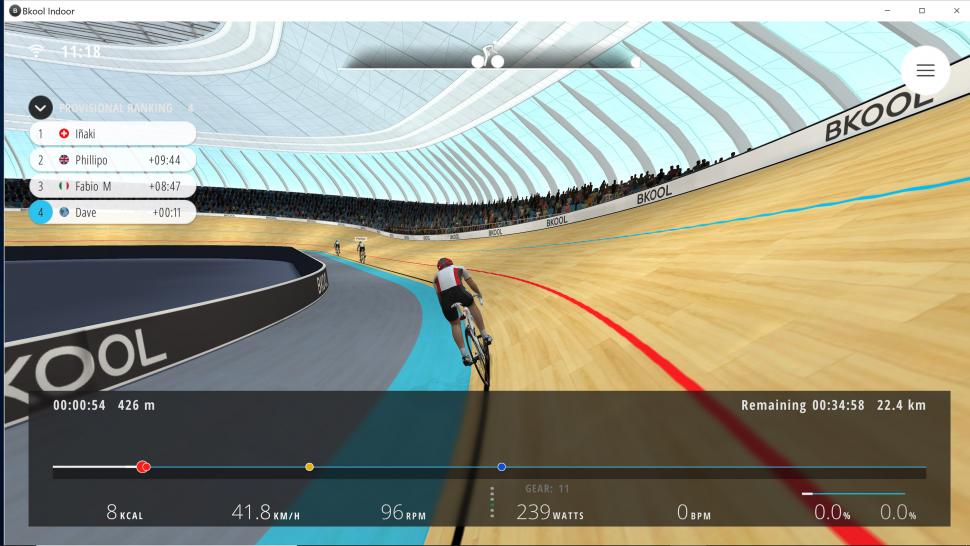
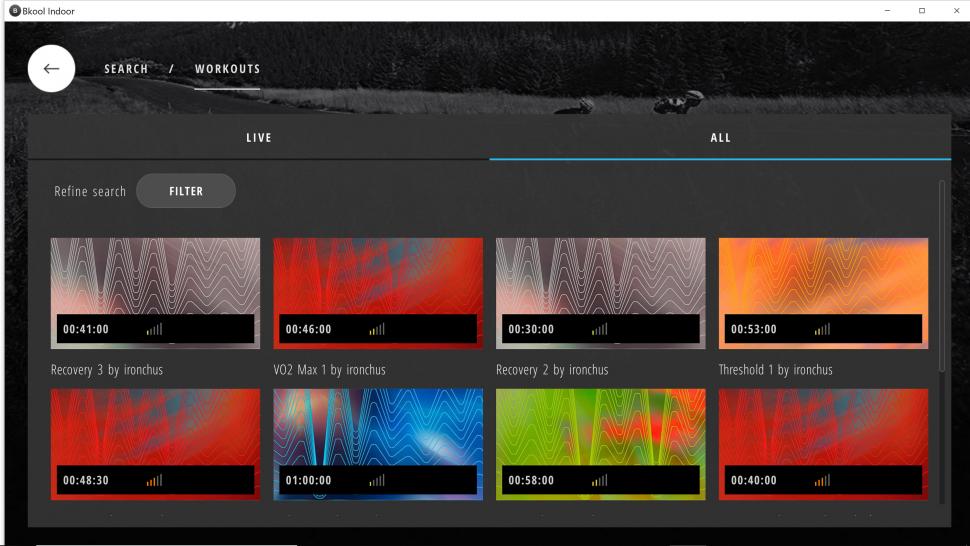
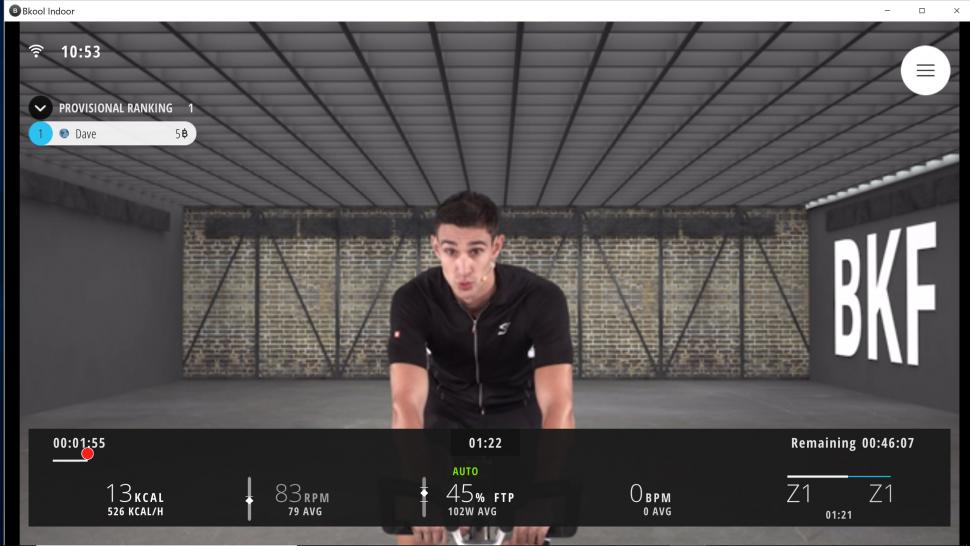
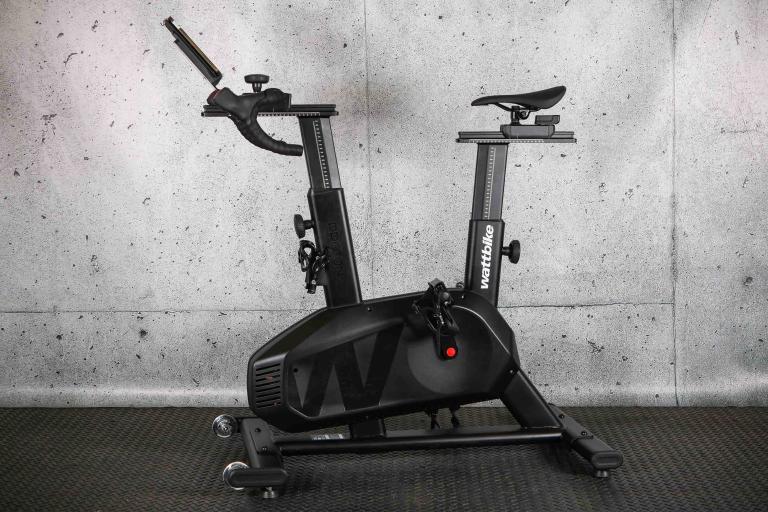
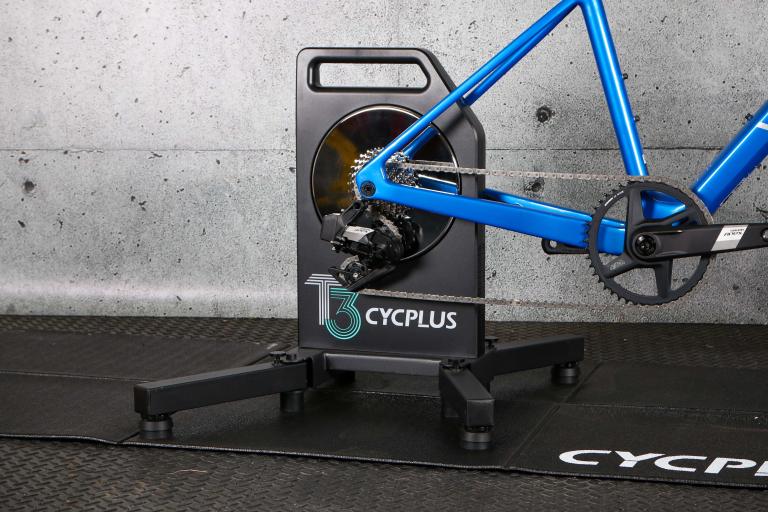
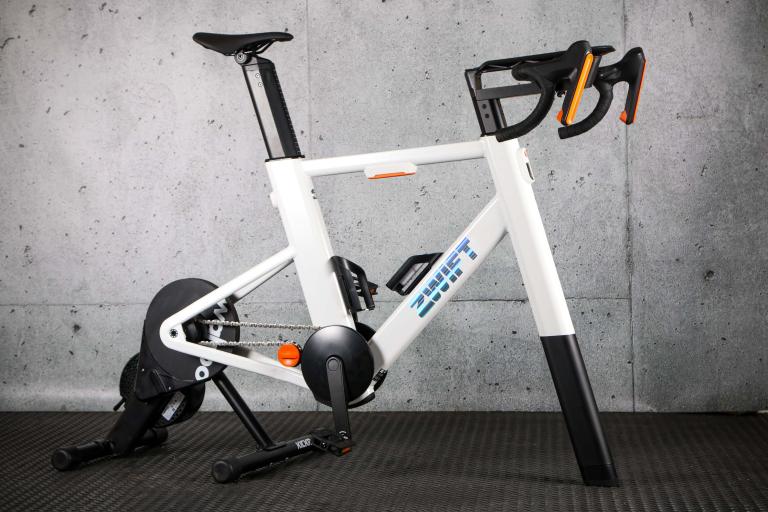

Add new comment
14 comments
Hello,
I have bought the bkool smart bike.
You write that it is completely silent when in use.
But in fact mine is not silent in operation; you can hear a running noise from the wheel that is quite noticeable. It is not catastrophic but it is far from being completely silent.
Is yours really completely silent, or is there some noise coming from the wheel?
I am wondering if a silent workout is really attainable? If so then perhaps some adjustments are needed on the bike that I have purchased.
Thank you for your kind advice.
The latter bit was what I was alluding to. So we already have a 'smart' bikes and indoor training cycles from other brands which pre-date the Bkool, hence they don't have the only one - as they claim and as a representative has admitted is false. That's my only beef with them.
While we're at it, Bkool aren't claiming it's the only automatically controlled 'spin' bike (to bring in the link added in your last edit)
Unfortunately my phone won't allow me to paste links directly hence the edits I'm afraid and it hadn't updated your replies.
Like I alluded to previously it's just a technicality but I can see why they can make this claim.
A 'spin' bike is a registered trademark which is why all other bikes based on the same platform subsequently used the terminology 'indoor bike/bicycle/cycle'.
The term 'spinning' can only be used as below so bkool can't use the term:
https://en1.spinning.com/legal-trademark
All other 'spin' style bikes are referred to as indoor cycles/bikes.
The terms cycle/bicycle are interchangeable:
http://www.differencebetween.info/difference-between-cycle-and-bicycle
Editing after replies rather mucks things up I'm afraid.
I get the lack of free wheel in the Bkool, it's your rather arbitrary classification of bike vs cycle that I'm wondering about - and that Wikipedia link is nether here nor there about that. Bkool themselves have said it's not the first, and yet they have that front and centre in their advertising and documentation. It's simply but true, they know it, they have said as nick and no amount of hair splitting over which contraction of the word 'bicycle'changes any of that.
Just get a Kickr or equivalent and trouser a few hundred saved.
I've been using my Wattbike atom for 4 months & it is a revelation. The shifting, once the firmware was updated, is instant. It is safe to have 2 under 3yr olds wondering around. For me it is quiet enough. Easy to adjust/move around (I previously didn't have a garage/pain cave room). And the "climbs" are fantastic. I ditched Zwift & now just do a few climbs per week once the kids are asleep!
The Neo and latest version of the Kickr DD are extremely quiet. I doubt Bkool can make it a success. They have just released their latest version of their simulator. From friends who still have an active account it still has the same issues. Those being
Lag off the start for non Bkool trainers
Blue speed numbers meaning Bsim has started to guess your speed
Bkool trainers have a significant speed advantage over non Bkool.
Power reading s of the Bkool Pro are overestimated by upto 30%
Ive had the odd race on Bsim(with Bkool pro), I could produce over 400Watts average for an hour, spin up 53*11 to over 100rpm on the flats . Whereas in Zwift I can only record just over 300 Watts for 40mins and cannot spin up a 53*11 gear unless it's on a steep decline.
my W/kg on Bkool were nearly 5, isn't that something like a cat 1 standard, hahaha.
My W/Kg on Zwift is 3.2-3.4, more realistic
https://encrypted-tbn0.gstatic.com/images?q=tbn:ANd9GcQ7f0kT-Wx_tgXRe2t_UviAHjgUZa50KRjKXiwd3G2BWOYuVH2JsA
Nothing can justify it - I brought that up with them when they started doing the teasers on facebook, quick reply from them ....
and nothing done unsurprisingly. It's a blatant lie, as they admit, and they're still spouting it - even the bit about "we were the first" is dubious to say the least. I like a Bkool for a lot of things, not this though, beyond marketing.
I think that they're using the term indoor bike because this is a fixed gear stationary bike akin to a spin bike rather than an exercise bike which is technically what the atom is.
I'm unsure what you mean by "an exercise bike which is technically what the atom is." It's a fixed gear stationary bike in exactly the same way the Atom is - or the Cycleops Pro series or the Tacx 'indoor bike'.
Indoor cycling/studio/spin bikes are fixed gear direct drive units ie no freewheel capability with a weighted flywheel aka bkool indoor bike:
https://indoorsfitness.com/spin-bikes-vs-exercise-bikes/
https://en.m.wikipedia.org/wiki/Indoor_cycling
If the Atom is a fixed drive unit and has a weighted flywheel then it's an indoor bike otherwise it's an upright stationary exercise bike.
Bkool can't claim to be the first to market with an indoor bike with automatic resistance control as the BH Fitness spada series has been around a while in the same format. Although it's only able to maintain 280w maximum for steady state resistance so I'm not sure it's anywhere near the same league as the bkool/atom etc.